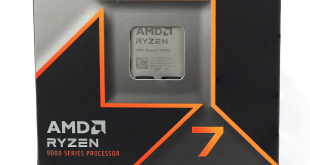If the semiconductor market rumours are correct, then Intel Corp. might not be the only chipmaker, which plans to delay mass production of chips using 10nm manufacturing process. Apparently, Taiwan Semiconductor Manufacturing Co. postpones risk production using 10nm fabrication process by two quarters.
“TSMC will start risk production in its 10nm processing lines in the second quarter of next year and mass production as early as the second half of next year, reports Business Korea.
TSMC officially said that it planned to start risk production of chips using 10nm process technology in the fourth quarter of 2015. Typically, it takes about a year to start mass production of semiconductors after the beginning of risk production. As a result, delay of risk production essentially means postponement of mass production.
If the information about the delay of 10nm risk production is correct, it means that the company will only start to produce 10nm chips in mid-2017, which may be a bad news for various fabless chip designers, including Apple, Nvidia Corp. and Xilinx.
The delay may be a bad news for Apple, which introduces new iPhones in September and new iPads in October. In a bid to launch new products in time, Apple needs to start mass production of new system-on-chips in March or April. Production cycle for 10nm FinFET chips is over 90 days. Therefore, if TSMC starts high-volume production of 10nm ICs in June ‘17, it will not be able to meet Apple’s requirements for new iPhones. Meanwhile, Apple may sell around 100 million iPhones in Q4 2017, which means that it will need to get 100 million system-on-chips for them. It is unclear whether Samsung Foundry can produce 100 million SoCs using a leading-edge process tech for Apple.
TSMC’s 10nm manufacturing process will have 110 per cent higher logic density compared to its 16nm FinFET+ (CLN16FF+) process tech, 20 per cent higher clock-rate potential at the same power and 40 per cent lower power consumption at the same frequency.
TSMC did not comment on the news-story.
Discuss on our Facebook page, HERE.
KitGuru Says: It looks like 10nm is a tough nut to crack. Still, consider the news-story with a grain of salt since the information comes from an unofficial source.
 KitGuru KitGuru.net – Tech News | Hardware News | Hardware Reviews | IOS | Mobile | Gaming | Graphics Cards
KitGuru KitGuru.net – Tech News | Hardware News | Hardware Reviews | IOS | Mobile | Gaming | Graphics Cards



< ??????.+ zeldadungeon+ *********<-Part-time working I Saw at the draft which said $19958@mk11 < Now Go Read More
<???????????????????????????????
15